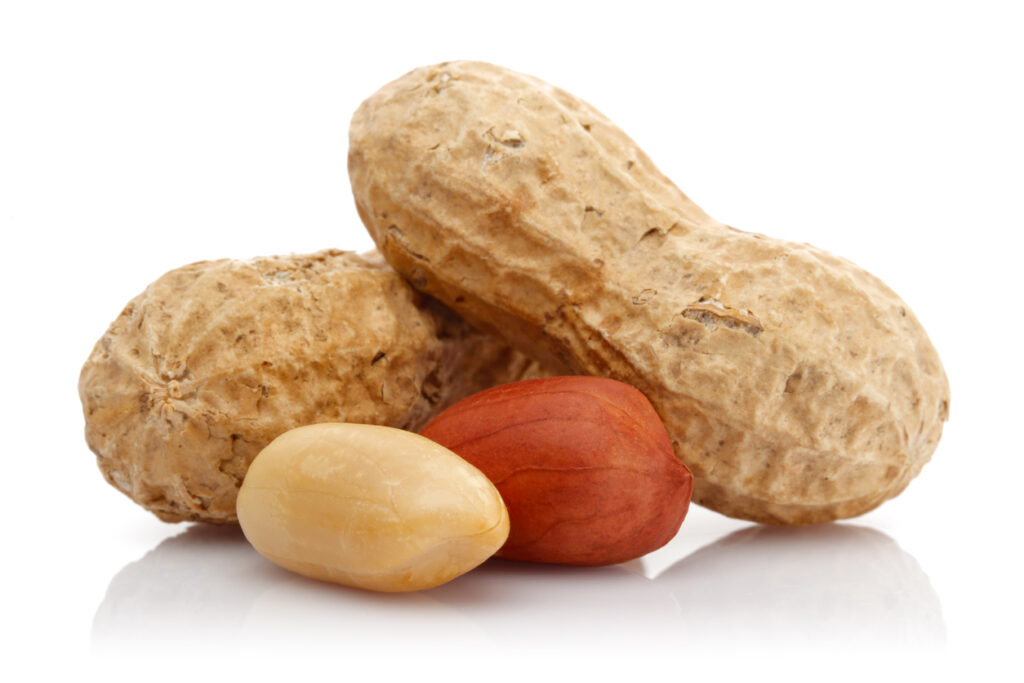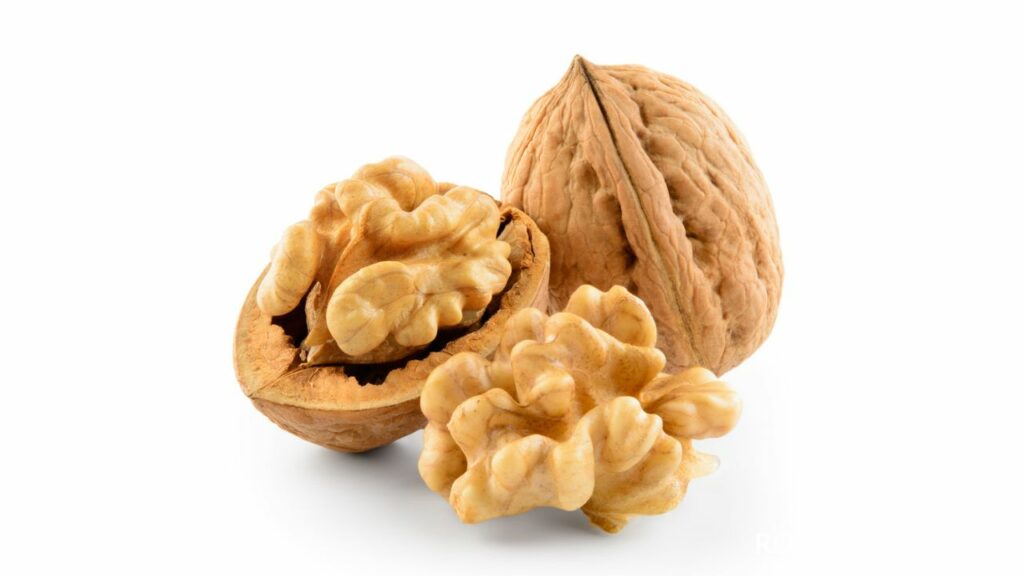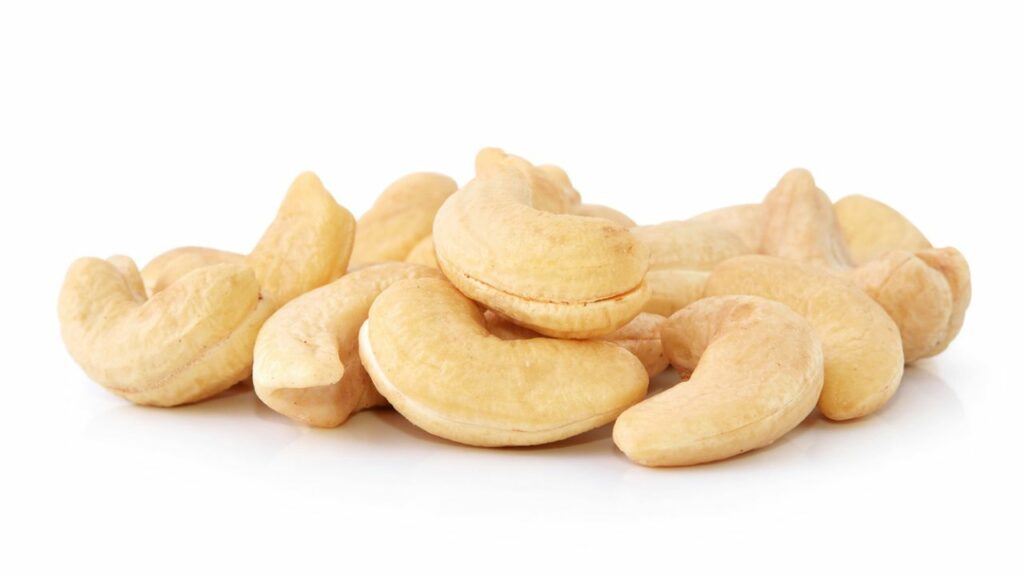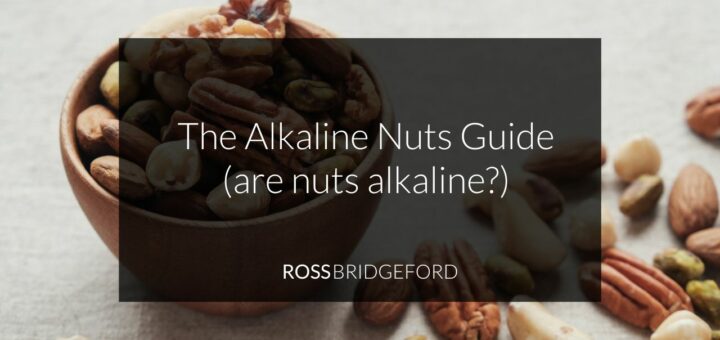Alkaline Nuts Guide (and Which Nuts Are Acidic)
Alkaline Nuts Guide (and Which Nuts Are Acidic)
This is a question that comes up all the time in my coaching membership (we do a live Q&A every month), and I haven’t addressed nuts in my ‘Most Alkaline Foods’ post…and honestly, I can’t believe it!
Nuts are a huge part of the alkaline diet, and so in this quick guide I am going to share which are alkaline and acidic, (or I should say alkaline-forming, and acid-forming) and give an overview of each of the alkaline nuts to share their benefits, nutrient profile and share a few alkaline recipes with you too.
Do you want to know which nuts are alkaline and which are acidic? If so, you’ve come to the right place! In this article, we will discuss the alkaline and acidic properties of various nuts. We will also provide a list of alkaline forming nuts and a list of acidic nuts. So without further ado, let’s get started!
We will answer questions such as:
- Are peanuts alkaline?
- Which is the most alkaline nut?
- Which is the most acidic nut?
- How many nuts you can eat on an alkaline diet?
- Should I worry about the fat content in nuts?
- Which has the best nutrient profile?
Let’s get into it!
Which Nuts Are Alkaline?
The short answer is ALL nuts are alkaline except peanuts. Some are better (or more alkaline) than others, but really you can eat all nuts.
There is just one thing to look out for. And I’ll get to that in a moment.
First, I want to address the question of peanuts.
Are Peanuts Acidic or Alkaline?

Peanuts are most definitely acidic. They are incredibly vulnerable to mold, during the growing, harvesting and storage phases, and over 25 strains of bacteria are commonly found on them. One particular mold, a carcinogen called aflatoxin, a natural toxin produced by certain strains of the mold, is very concerning.
These acid-forming molds have no place in an alkaline diet (where mold is one thing we are definitely trying to avoid!). Not only is aflatoxin consumption linked to cancer, but it can also stunt the growth of children and cause liver toxicity. It is especially dangerous for pregnant women, as aflatoxin has been linked to stillbirths and low birth weights. It can also cause skin rashes, pale skin, hair loss, and abdominal pain in adults.
And when you think about how peanuts are most often consumed – as peanut butter (highly concentrated acidic peanuts!), it’s never a good choice.
Even if you purchase organic peanuts or peanut butter, it is inevitable that nature’s wrath will find a way to impact the taste.
What these manufacturers fail to mention is that they use the peanuts with less mold for your cocktail peanuts, and the ones with more mold for peanut butter- since it gets mashed up anyway!
The problem is that the mold spores in the peanuts, while they may not be visible to the naked eye, are still present. As you eat them, these microscopic organisms release their toxins into your system which can cause a myriad of health problems.
So that’s the acidic nuts covered! Let’s get into the rest, and the best choices.
List of the Nuts that Are Alkaline
These are the nuts I like to consume regularly on the alkaline diet:
Macademia Nuts
Macademia nuts are so healthy and alkaline. They are an incredible source of essential fatty acids including Omega 3’s and 6’s, so a perfect choice for alkaline dieting. They are also alkaline-forming when digested, and provide good amounts of dietary fibre.
Although they are high in fat, macadamia nuts contain primarily monounsaturated fat, which is the heart-healthy type of fat that can help reduce your risk of heart disease and type 2 diabetes.
Macademia nuts have the highest fat content, making them the most calorific nut and therefore are a great source of energy, and brain power.
A cup or 132g of macadamia nuts contains:
- Calories: 945
- Protein: 10.3 g
- Fat: 100 g
- Carbs: 16.9 g
- Fiber: 10.6 g
- Sugar: 5.46 g
- Calcium: 92.4 milligrams (mg)
- Iron: 3.5 mg
- Magnesium: 156 mg
Walnuts
Walnuts are another alkaline nut to incorporate into an alkaline diet whenever you can. They provide essential fatty acids in addition to protein, fibre, vitamins and minerals.
Plus they are the best nut-source of omega 3, making them one of the more alkaline nuts. Walnuts are also an excellent source of alpha-linolenic acid, the plant-based omega-3 fatty acid. One ounce of walnuts provides a significant amount of total fat, including monounsaturated and polyunsaturated fats.
A 1-ounce (30-gram) serving of walnuts — about 14 halves — provides the following essential nutrients:
- Calories: 185
- Water: 4%
- Protein: 4.3 grams
- Carbs: 3.9 grams
- Sugar: 0.7 grams
- Fiber: 1.9 grams
- Fat: 18.5 grams

Cashews
Cashews are alkaline-forming in the body, and also provide fats, protein and fibre.
The essential fatty acids found in cashews can help lower LDL cholesterol and triglyceride levels, reducing the risk of cardiovascular disease, stroke, and heart attack.
According to a study published in the British Journal of Nutrition, people who consume nuts more than four times per week may have 37% lower risk of coronary heart disease compared with those who seldom or never consume nuts.
Cashews also contain vitamins C and B, including 7 micrograms of folate.
One ounce (28 grams) of unroasted, unsalted cashews provides you with around:
- Calories: 157
- Protein: 5 grams
- Fat: 12 grams
- Carbs: 9 grams
- Fiber: 1 gram
- Copper: 67% of the Daily Value (DV)
- Magnesium: 20% of the DV
- Manganese: 20% of the DV
- Zinc: 15% of the DV
- Phosphorus: 13% of the DV
- Iron: 11% of the DV
- Selenium: 10% of the DV
- Thiamine: 10% of the DV
- Vitamin K: 8% of the DV
- Vitamin B6: 7% of the DV

Almonds
Almonds are alkaline forming when digested and provide good amounts of fats, protein, dietary fibre and vitamins & minerals.
Almonds are a fantastic source of antioxidants, magnesium, vitamin E and manganese, plus the fats omega 6, 9, 3 and small amount of saturated fat (80% monounsaturated, 15% polyunsaturated, and 5% saturated)
They are also incredibly high in antioxidants, which help protect cells from oxidative stress, which can damage molecules and contribute to inflammation, aging, and diseases like cancer.
A 1-ounce (28-gram) serving of almonds contains:
- Fiber: 3.5 grams
- Protein: 6 grams
- Fat: 14 grams (9 of which are monounsaturated)
- Vitamin E: 37% of the RDI
- Manganese: 32% of the RDI
- Magnesium: 20% of the RDI
- They also contain a decent amount of copper,
- vitamin B2 (riboflavin) and phosphorus.
Brazil Nuts
Brazil nuts are an excellent source of nutrition, providing fats, antioxidants, vitamins, and minerals. They’re particularly high in selenium, a mineral with potent antioxidant properties. Eating Brazil nuts may reduce inflammation, support brain function ,and improve your thyroid function and heart health .
Brazil nuts provide good amounts of fats in addition to protein, fibre, vitamins and minerals.
They are an alkaline nut that contains the highest amount of selenium than any other nut, with a single nut containing almost 200% of your daily need.
Selenium is a powerful antioxidant that helps protect cells from oxidative damage, supports the immune system and may reduce the risk of certain cancers. Plus it also helps with thyroid health and metabolism.
These are one of my favourites because you don’t need to eat a lot to get that selenium hit!
A 1-ounce (28-gram) serving of Brazil nuts contains the following nutrients:
- Calories: 187
- Protein: 4.1 grams
- Fat: 19 grams
- Carbs: 3.3 grams
- Fiber: 2.1 grams
- Selenium: 989% daily value (DV)
- Copper: 55% DV
- Magnesium: 25% DV
- Phosphorus: 16% DV
- Manganese: 15% DV
- Zinc: 10% DV
- Thiamine: 15% DV
- Vitamin E: 11% DV
Pecan Nuts
Pecans are rich in antioxidants, which can help delay the progression of degenerative neurological diseases like amyotropic lateral sclerosis (ALS), also known as Lou Gehrig’s disease. Pecans can also help lower LDL levels.
Pecans are packed with vitamins and minerals like Vitamin E, manganese, magnesium, phosphorus, zinc, iron, and calcium. All these nutrients can help boost your immunity and keep you healthy. Pecans have also been found to contain high levels of dietary fiber which is beneficial for your digestive health as it removes toxins from our bodies.
Additionally, studies have found that consumption of pecans has been linked to reduced risk of certain cancers and heart disease. They can also help lower cholesterol levels, which helps reduce your risk of stroke and other cardiovascular problems. Furthermore, they are a great source of healthy fats that can help keep your skin looking youthful.
One ounce (28 grams) of pecans contains the following nutritional value:
- Calories: 196
- Protein: 2.5 grams
- Fat: 20.5 grams
- Carbs: 4 grams
- Fiber: 2.7 grams
- Copper: 38% of the Daily Value (DV)
- Thiamine (vitamin B1): 16% of the DV
- Zinc: 12% of the DV
- Magnesium: 8% of the DV
- Phosphorus: 6% of the DV
- Iron: 4% of the DV
How to Eat Alkaline Nuts Every Day (Including Alkaline Nut Recipes)
Alkaline nuts are quite easy to include in your daily diet. You can simply snack on a handful of nuts throughout the day or add them to salads and stir-fries for added crunch.
A combination of almonds, cashews, brazil nuts, walnuts and macademia nuts at your desk for a handful here and there throughout the day is an incredible snack. You will be surprised at just how filling this is (especially when you combine with alkaline seeds such as sunflower, pumpkin, sesame seed etc.) and it can easily fill that snack-attack time in between meals. Also excellent with an alkaline herbal tea!
Here are my top quick tips to get plenty of nuts every day:
- Simply a bowl of raw nuts (as above)
- Make alkaline nut milk by soaking cashews, almonds, etc overnight before running through a cold-press juicer such as a Hurom. Juice the nuts and run through some filtered water as you go and it makes absolutely delicious fresh nut milk. The dry fiber that is left over can be used in baking.
- Put nuts into your alkaline smoothies – cashews, brazil nuts, almonds, and walnuts all work perfectly for this and add the healthy fats and other alkaline nutrients and minerals listed above.
- Roughly chop nuts into salads and stir-fries – cashews go especially well with chilli and basil (one of my favorite Thai dishes is Pad Kee Mao and I always throw in a few cashews too…which I know isn’t traditional but it works so well with the basil and chilli!)
- Make nut butter such as this awesome recipe from our friends at Food Matters
Some of My Fave Alkaline Recipes
No Bake Bliss Balls (great snack)
Creamy Vegan Cashew Dressing (Caesar Alternative)
How Many Nuts Can You Eat on an Alkaline Diet & Should I Worry About Fats?
As with most of my teaching try not to overthing living alkaline! Don’t stress about nuts (or fat, more on that in a minute). As long as it isn’t peanuts, all other nuts are alkaline, and you can eat them freely. Eat them without overthinking. I am quite sure you’re not going to suddenly go doolally for nuts and eat 800 walnuts a day. These alkaline nuts are filling – they are full of fibre, protein, fat and micronutrients, which will leave you feeling lovely and satisfied and full. You won’t have the urge to overeat them.
If you want to have a quantifiable measure, eat around 1/2 to 1 cup of nuts per day. That’s a good amount, and definitely not over eating.
With regards to nuts and worries about eating ‘too much’ fat, let’s keep this simple: you can’t eat too much HEALTHY fat.
The fats in nuts are healthy, cholesterol-lowering, heart healthy fats.
These fats will also not cause weight gain. They simply won’t. This is not how the body works! It doesn’t just ingest fats in food and the fat simply sticks there, hanging around. Mark Hyman explains it all well here, and I discuss it in my in-depth guide here.
The body holds on to and generates fat cells when it is out of balance, and toxic, acidic foods will put it out of balance (including unhealthy fats such as trans-fats, cheap seed and vegetable oil like canola, and plastic awful crap like margarine).
The fats in nuts will support the body to balance, maintain an alkaline environment, and provide the body with the tools it needs to burn fat and speed metabolism.
And that’s a wrap of the most alkaline nuts, and how to use them! Give these ideas, snacks and recipes a try (avoiding peanuts and peanut butter!), and see if you can start incorporating nuts into your daily alkaline diet.






So much conflicting info. I see many places stating walnuts, pecans, and cashews are acidic. Where can I find a verified source for this alkaline/acidic stuff? Because it’s not just nuts. I come across conflicting stuff for many different food types when trying to determine alkaline/acidic.
See the very top of this page 🙂
Hello, a great post to read while I snack on a pack of mixed nuts 🙂
They are oven roasted however. How do you feel about that? Does that affect their alkaline forming qualities?
Thanks!!!
Thank you for the information on nuts! Very helpful. Which nuts need to be raw/unroasted? All of them?
And all of them unsalted?
Thank you!
So pleased with the info on nuts. Thank you. Made my healthy course easier.